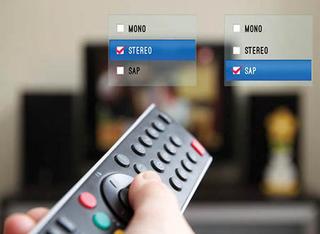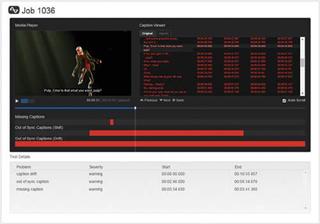Another FCC Deadline on Horizon
WASHINGTON—Another FCC deadline is approaching. Are you ready?
If your answer is no—or maybe “what deadline?”—you’re not alone. A byzantine maze of rolling deadlines and complex information is all part of the new requirements within the “21st Century Communications and Video Accessibility Act,” or 21CCVA.

Congress signed 21CCVA into law four years ago with a simple premise: To ensure that individuals with disabilities have access to emerging technology, including video programming technologies and IP-based communication.
But how exactly to do that, and where does broadcasting fit in?
TIERS OF REQUIREMENTS
The path forward is a little bumpy and convoluted. The 21CCVA has “tiers” of different requirements when it comes to captioning—impacting everything from timing to quality. Deadlines dot the calendar from 2015 through 2017 (see sidebar).
Station groups like Nexstar Broadcasting Group have been paying close attention. “We implemented checks and balances through master control and news so that we know we have record of any issues and record of them being followed up on,” said Blake Russell, senior vice president of station operation for Nexstar, commenting on the company’s implementation of new captioning rules. “There was certainly a lot to this [implementation]. While adopting policy such as this to meet the mandates set forth by the commission are cumbersome and in some cases costly, we attacked it head on and we feel we are very comfortable in fulfilling the rulemaking standards set forth.”
To be ready for the very next deadline, broadcasters must look closely at the unusual combination of captions and their emergency alert response system.
Get the TV Tech Newsletter
The professional video industry's #1 source for news, trends and product and tech information. Sign up below.
Beginning May 26, the 21CCVA requires that television stations provide audio in their secondary audio program (SAP) channel that matches any emergency information appearing on their main channel. This means that any crawl or text displays that appear on a main channel— such as weather alerts or school closings that are outside of actual newscasts or EAS alerts—now have to be voiced on the SAP channel.
“If you put emergency information on your main channel, and that emergency info would constitute different things— like text crawl or maps—to indicate some kind of emergency conditions, then you must have an aural representation of that on your secondary audio program,” said Bill Robertson, vice president of business development for Digital Alert Systems, a Lyndonville, N.Y.-based provider of emergency alert systems for the broadcast industry.
That kind of information could include weather updates, school closings, evacuation routes and municipal contact info. In addition, an attention signal or tone must be inserted on the main channel to tell viewers that emergency audio is available on the secondary channel.
There are two exceptions in which broadcasters do not have to take action: If the information on the main channel is part of a newscast, or if it’s part of an actual EAS event.
This causes confusion because the term “emergency information” may lead a station to consider that it’s also an EAS situation; but that’s not always the case.
“If the audio [of the emergency event] is described on the main channel, you are clear,” Robertson said. It’s the additional information that goes up that can cause difficulties. Most likely a local news anchor isn’t going to verbally read out an entire list of school closings, but that’s exactly the kind of information needs to be passed on to the secondary channel.

Solutions from companies like Nexidia help verify accuracy and timing to keep up with the new rules within the 21st Century Communications and Video Accessibility Act. The availability of technology that can handle such requirements plays a key role as broadcasters attempt to stay ahead of the deadlines. DAS’ solution is the Audio Management System, which is comprised of two parts: the MultiPlayer, which is an audio player and switching device; and the Audio Message Controller. The system is designed to pull information from a variety of sources, convert text to audio, prep it for playback on the second audio channel, and then provide the necessary audio and triggering signals.
“This is an aggregating solution, not just single-point,” Robertson said. “It’s not just weather or school closings or municipal news. It aggregates all of the other information sources to be managed under one device for 21CVVA compliance.”
2015 AND BEYOND
The 21CCVA ruling, of course, goes much deeper than just this. Some are concerned about one of the next deadlines, which focuses on the FCC’s text-to-speech rulings. “This is one where rulemaking didn’t make technological sense,” Nexstar’s Russell said. “Vendors are not ready and therefore local stations are not ready either,” so that the group hasn’t yet been able to test workflows,” he said. “We want one box that everything communicates to rather than a specific module for each box. This is a major aspect of our focus at NAB this year.”
Monitoring is also an FCC-mandated issue. The first set of cascading deadlines came in March, when stricter rules were set in place for accuracy, timing and placement of captions on the screen. Monitoring those rules has been the purview of Nexidia, an Atlanta-based provider of dialogue and audio analysis products and technologies, whose solutions are being used to verify that captions are accurate and properly timed with what’s happening on the screen. The technology works for a number of languages on both a main channel or SAP. Users are then able to receive reports on caption compliance.
The company’s technologies include Nexidia CC Director for automated repurposing of on-air closed captioning for IP-based distribution, and Nexidia QC for automated closed-caption and video description compliance, caption alignment, and language identification.
There are also concerns about how to meet the FCC’s guidelines on quality with new guidelines adopted in March.
“When it comes to captioning prerecorded sitcoms and dramas, having highly trained human caption editors with experience and good judgment is the essential ‘technology’ needed to meet those standards,” said Anna Nowak, marketing specialist for CaptionMax, a Minneapolis-based provider of captioning technologies.
After all, what defines a “quality caption?” “I think [broadcasters are] aware of [the requirements], but there’s an absence of qualitative metrics around caption quality,” said Drew Lanham, senior vice president and general manager of Nexidia’s media and entertainment division. “The FCC has been [clear] in the sense in that broadcasters need good caption quality and need [to follow] best practices—such as the monitoring of equipment. But how do you actively quantify the measure of what is quality?”
Upcoming FCC Captioning Deadlines
Internet video clips must be captioned if the associated program is shown on TV in the U.S. with captions on or after the following dates:
Jan. 1, 2016, where the video clips contain single excerpt of a captioned TV program with the same video and audio that was shown on TV (“straight lift” clips).
Jan. 1, 2017, where a single files contains multiple straight lift clips (montages).
July 1, 2017, video clips of live or near-live TV programming (sports or news); Up to 12 hour delay for clips of live programming is permitted after program first appears on TV, and eight hours for near-live TV.

Archival Internet Video Programming
• Within 30 days after the date it is shown on TV with captions on or after March 30, 2015 and before March 30, 2016.
• Within 15 days after the date it is shown on TV with captions on or after March 30, 2016.
Source: FCC
As of now, it falls on end users—TV viewers themselves—to submit complaints to a station or directly to the FCC. Nexidia is suggesting broadcasters take the issue further. “Rather than relying on the consumer [to make complaints about caption quality] have a scalable solution that looks at all of the caption quality,” Lanham said.
Other companies addressing the FCC’s new rules include the AberFast solution from Aberdeen, a cloud distribution captioning service that can upload an HD source file and have it transcoded with captions and delivered to five different stations; and the PreciseCheck quality control solution from CaptionMax.
Up next: a series of rolling deadlines in January 2016 and 2017 on captioning of IP streams. Broadcasters must caption their IP clips starting Jan. 1, 2016 for “straight-lift” clips, with additional deadlines in 2017 for captioning montages of clips and live/nearlive clips.
At the end of the day, how prepared are broadcasters for these rolling deadlines?
“The NAB has done a pretty good job to educate [broadcasters about the requirements], but people are wondering about the [technology] solutions,” DAS’ Robertson said. Stations need to do more to fully understand what the ruling entails and understanding minute but important differences in there.
After all, more is to come throughout 2015 and beyond. Information on the 21CVAA ruling can be found at www.fcc.gov/guides/21st-century-communications-and-video-accessibility-act-2010.
Susan Ashworth is the former editor of TV Technology. In addition to her work covering the broadcast television industry, she has served as editor of two housing finance magazines and written about topics as varied as education, radio, chess, music and sports. Outside of her life as a writer, she recently served as president of a local nonprofit organization supporting girls in baseball.

